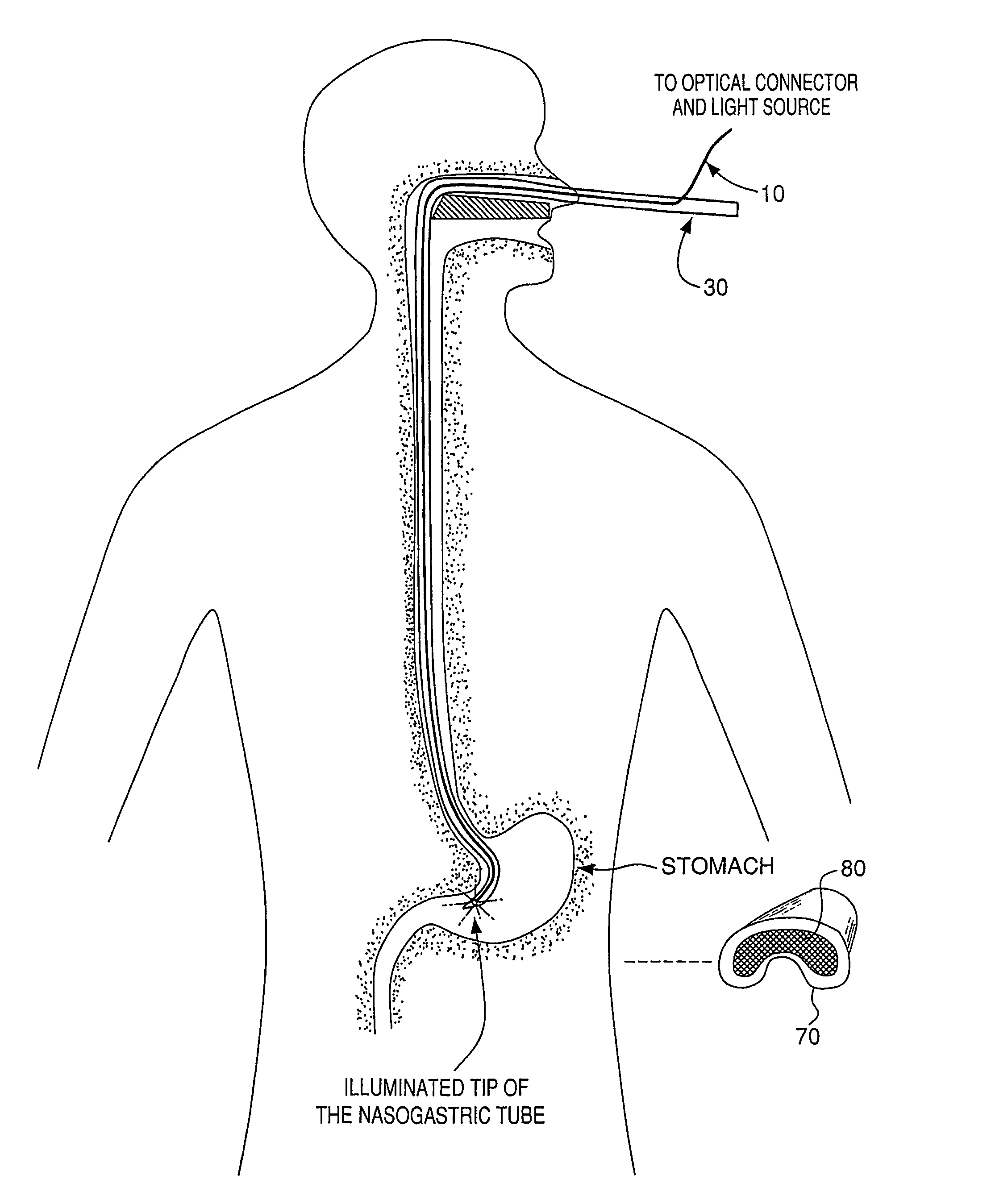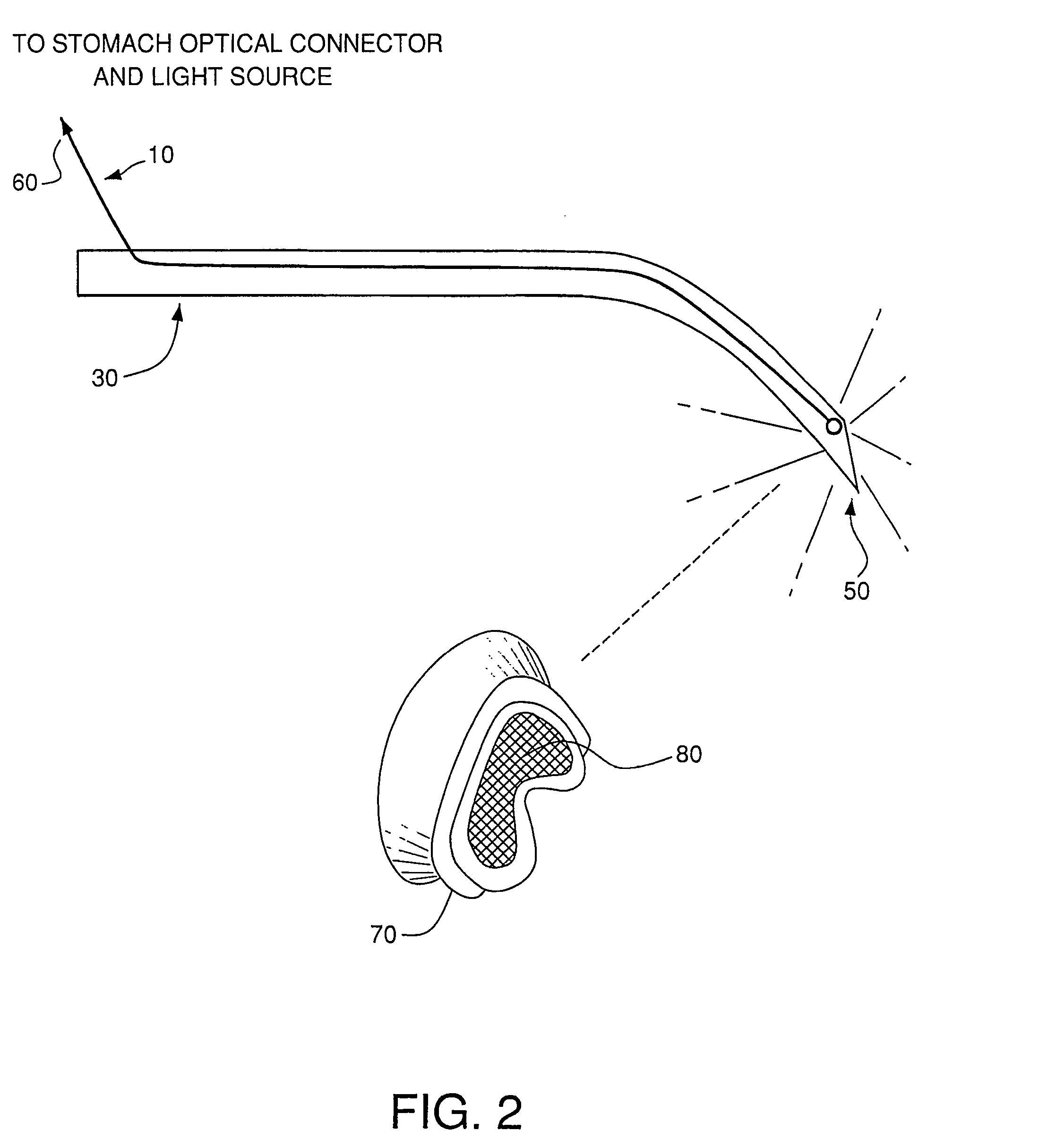Optical guidance system for invasive catheter placement
a technology of optical guidance system and invasive catheter placement, which is applied in the direction of catheter, application, diagnostic recording/measuring, etc., can solve the problems of not being applicable to catheters placed within the body cavity of some large adults, and the method is highly accurate, and achieves the effect of high accuracy
- Summary
- Abstract
- Description
- Claims
- Application Information
AI Technical Summary
Benefits of technology
Problems solved by technology
Method used
Image
Examples
Embodiment Construction
[0013]An optical guidance system in accordance with the invention includes a laser diode having a wavelength in the range of 620 nm to 1100 nm, preferably a 780 nm wavelength with an emission less than 2 nm wide and less than 5 mW in power that / is carried through a 150 micron (or less) core glass optical fiber to an “ST” optical connector at a distal end. As shown in FIG. 1, the glass optical fiber 10 is embedded in (i.e., partially or completely surrounded by) the wall 20 of a catheter 30 having a catheter lumen 40. The optical fiber 10 runs the entire length of the catheter 30, and the unterminated end of the optical fiber 10 at the distal end 50 of the catheter 30 is adapted to be inserted into the patient as shown in FIG. 2. The proximal end 60 is terminated with an ST optical connector (not shown) appropriate for connecting the optical fiber 10 with the laser diode (not shown) Conversely, the optical fiber 10 may be inserted into lumen 40 of the catheter 30 at its proximal end ...
PUM
 Login to View More
Login to View More Abstract
Description
Claims
Application Information
 Login to View More
Login to View More - R&D
- Intellectual Property
- Life Sciences
- Materials
- Tech Scout
- Unparalleled Data Quality
- Higher Quality Content
- 60% Fewer Hallucinations
Browse by: Latest US Patents, China's latest patents, Technical Efficacy Thesaurus, Application Domain, Technology Topic, Popular Technical Reports.
© 2025 PatSnap. All rights reserved.Legal|Privacy policy|Modern Slavery Act Transparency Statement|Sitemap|About US| Contact US: help@patsnap.com



